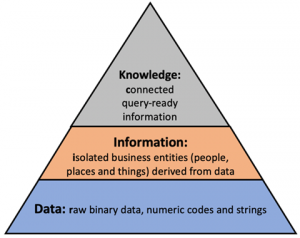Typically, when we consider technology-driven transformations, the first organizations which come to mind are companies such as Google, Amazon, and Facebook.
However, technology transformation can also improve many other businesses from retail, to infrastructure to healthcare.
One household name which successfully implemented one of the biggest technology transformation projects is Domino’s Pizza. It did this by using scenario analysis to understand what aspects of the business could be improved efficiently.[i]
Initially, Dominos might have started by considering key business transformation options. For instance: how can they improve the toppings on their pizzas? How can they improve the crust or the cheese to the customer’s preferences?
By exploring these options, over time they learned that technology would deliver the biggest impact.
Dominos was one of the first companies to introduce pizza deliveries by drones. Another technology transformation was the adoption of AI. To screen the pizzas being made, they graded pizzas using AI technology to establish if the pizza reached the required standard. They sold and delivered the pizza if it passed or replaced it with another pizza if it didn’t make the grade.
They also introduced a transformation project allowing customers to track pizzas on their phone. Customers could place orders using Slack, Facebook Messenger, or even tweet an emoji to get their pizza delivered[ii].
Dominos grew from being a pizza company to an ecommerce company which sold pizzas.
Knowledge is Power
Whether it is calculating business and technical fit scores or the digital maturity for business units and organizations, most Enterprise Architects would agree that we need a smart approach for making the most of data to build information types and scenario models.
As Gartner explains “Digital acceleration means making faster progress using data and technology to optimize and transform your enterprise.”[iii]
Data in its raw form needs context. As illustrated by the classic Knowledge Triangle, data needs structure to provide Information. [iv]

And when we start to link Information together, it becomes part of the Knowledge layer.
All large-scale projects benefit from the key insights we can gain from Knowledge, a connected view.
This is especially true of those centred around technological and digital transformation.
Tools for Planning Digital Transformation
Planning for digital transformation often involves asking large, open-ended questions:
- How is the market shifting?
- How do our systems operate?
- Is there too much complexity in this process, and how can we simplify it?
- Does a particular strategy provide a quicker time to market?
- Will it make us more reliable?
- Does it increase customer satisfaction?
- Does it make us less susceptible to vendors and suppliers going out of business?
Algorithms and scenario analysis can provide the tools to query the Knowledge layer and address these questions.
Algorithms allow us to set up formulas for running regular calculations of metrics we’re monitoring such as return of investment, or the cost increase / decrease of various systems.
The ability to consider scenarios or future state architectures is also central to answering digital transformation questions.
One key scenario is the baseline model to reflect the current state. This can be designed around a selected framework e.g., TOGAF, and allows us to identify and model and key milestones throughout the various stages of the project life-cycle.
Building the baseline is a crucial first step. However, once you’ve defined your vision and organized your current state model, how can you transition out from this to address key challenges? The answer lies in building a number of alternative scenarios to understand the impact of various options and to verify the initial vision.
For example, our vision is to introduce new markets and new capabilities. Or we might want to increase customer satisfaction and reduce complexity and costs. Alternative target scenarios would allow us to provide what we refer to as “trade-off scenarios” which we can use to compare a range of potential future state options and assess their success in delivering improvements according to our chosen metrics.
Scenario analysis, alongside algorithms for regular calculations are key deliverables provided by the ABACUS tool and related Avolution services. ABACUS’s flexible data structure and data-driven options enable you to start small and gain actionable insights quickly then scale out as you progress.
Planning for Digital Transformation, explore ABACUS
Schedule a Demo
[i] “How Domini’s Pizza Reinvented Itself”, Taylor, Bill. (2016, 28 November) https://hbr.org/2016/11/how-dominos-pizza-reinvented-itself and https://www.capgemini.com/wp-content/uploads/2017/12/dti_dominos_pizza_masters_series_final.pdf
[ii] “Domino’s in-house technology push has helped increase online orders.” 17 October 2018 by Suman Bhattacharya, DigiDay https://digiday.com/retail/dominos-house-technology-push-helped-increase-online-orders/
[iii] “Sustain Your Digital Momentum”. https://www.gartner.com/en/insights/sustain-your-digital-momentum?utm_campaign=RM_GB_2021_ITCIO_C_BB1_DIG-MOM-GI_E1_CA&utm_medium=email&utm_source=Eloqua&cm_mmc=Eloqua-_-Email-_-LM_RM_GB_2021_ITCIO_C_BB1_DIG-MOM-GI_E1_CA-_-0000
[iv] The Knowledge Triangle, Dan McCready. https://dmccreary.medium.com/the-knowledge-triangle-c5124637d54c

